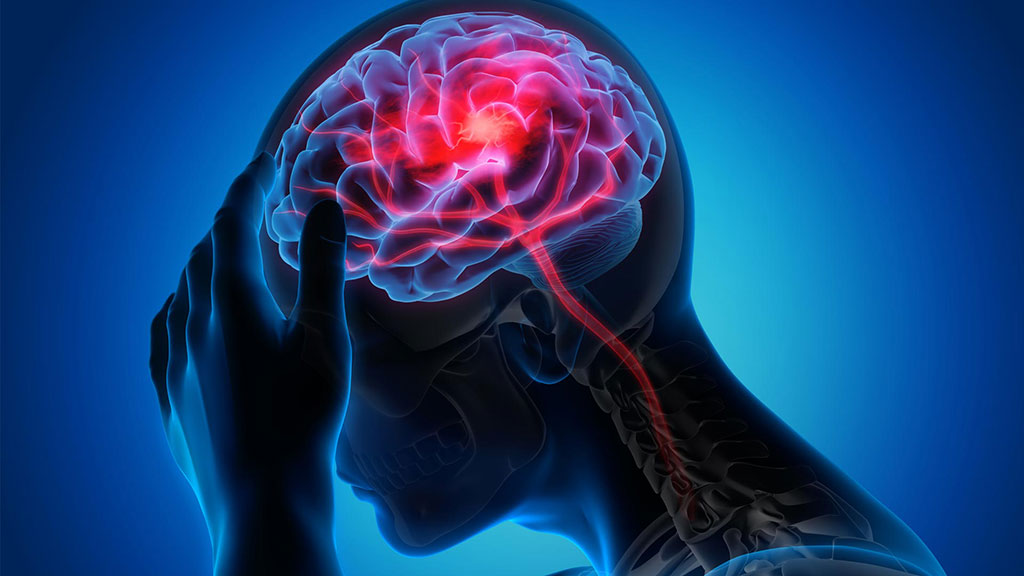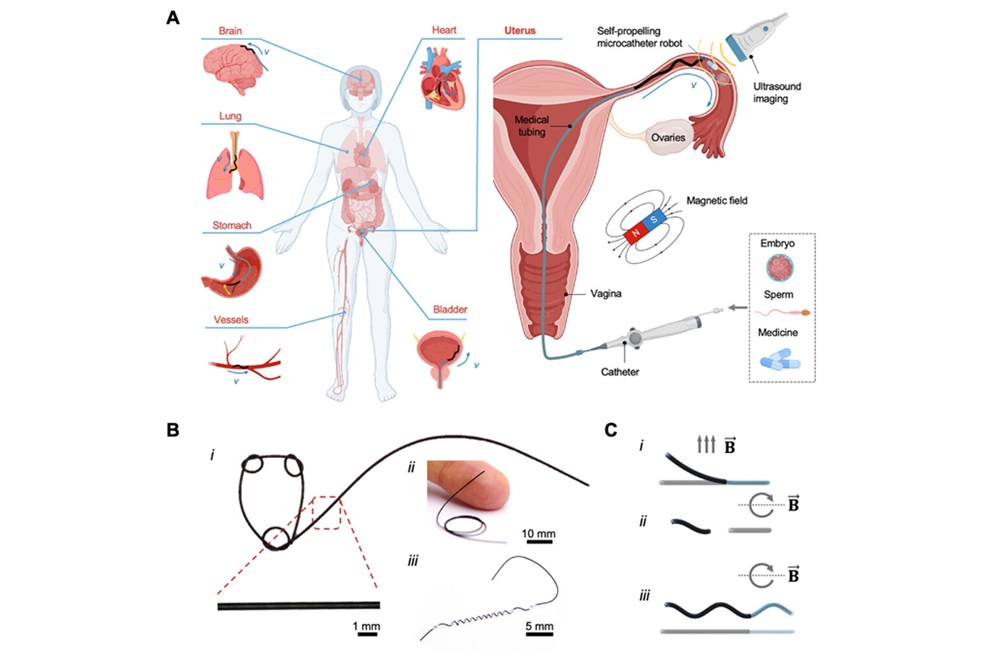Serious COVID-19 Patients Requiring Brain Imaging Face Higher Risk of Death, Finds Study
|
By HospiMedica International staff writers Posted on 24 Dec 2020 |

Illustration
Hospitalized COVID-19 patients with neurological problems serious enough to warrant brain imaging have a higher risk of dying, according to a new study.
These findings by researchers at Montefiore Health System (New York City, NY, USA) and Albert Einstein College of Medicine (New York City, NY, USA) have the potential to identify and focus treatment efforts on individuals most at risk and could decrease COVID-19 deaths.
The study looked at data from 4,711 COVID-19 patients who were admitted to Montefiore during the six-week period between March 1, 2020 and April 16, 2020. Of those patients, 581 (12%) had neurological problems serious enough to warrant brain imaging. These individuals were compared with 1,743 non-neurological COVID-19 patients of similar age and disease severity who were admitted during the same period. Among people who underwent brain imaging, 55 were diagnosed with stroke and 258 people exhibited confusion or altered thinking ability. Individuals with stroke were twice as likely to die (49% mortality) compared with their matched controls (24% mortality) - a statistically significant difference. People with confusion had a 40% mortality rate compared with 33% for their matched controls - also statistically significant. More than half the stroke patients in the study did not have hypertension or other underlying risk factors for stroke.
“This study is the first to show that the presence of neurological symptoms, particularly stroke and confused or altered thinking, may indicate a more serious course of illness, even when pulmonary problems aren’t severe,” said David Altschul, M.D., chief of the division of neurovascular surgery at Einstein and Montefiore, and associate professor in the Leo M. Davidoff Department of Neurological Surgery and of radiology at Einstein. “Hospitals can use this knowledge to prioritize treatment and, hopefully, save more lives during this pandemic.”
Related Links:
Montefiore Health System
Albert Einstein College of Medicine
These findings by researchers at Montefiore Health System (New York City, NY, USA) and Albert Einstein College of Medicine (New York City, NY, USA) have the potential to identify and focus treatment efforts on individuals most at risk and could decrease COVID-19 deaths.
The study looked at data from 4,711 COVID-19 patients who were admitted to Montefiore during the six-week period between March 1, 2020 and April 16, 2020. Of those patients, 581 (12%) had neurological problems serious enough to warrant brain imaging. These individuals were compared with 1,743 non-neurological COVID-19 patients of similar age and disease severity who were admitted during the same period. Among people who underwent brain imaging, 55 were diagnosed with stroke and 258 people exhibited confusion or altered thinking ability. Individuals with stroke were twice as likely to die (49% mortality) compared with their matched controls (24% mortality) - a statistically significant difference. People with confusion had a 40% mortality rate compared with 33% for their matched controls - also statistically significant. More than half the stroke patients in the study did not have hypertension or other underlying risk factors for stroke.
“This study is the first to show that the presence of neurological symptoms, particularly stroke and confused or altered thinking, may indicate a more serious course of illness, even when pulmonary problems aren’t severe,” said David Altschul, M.D., chief of the division of neurovascular surgery at Einstein and Montefiore, and associate professor in the Leo M. Davidoff Department of Neurological Surgery and of radiology at Einstein. “Hospitals can use this knowledge to prioritize treatment and, hopefully, save more lives during this pandemic.”
Related Links:
Montefiore Health System
Albert Einstein College of Medicine
Latest COVID-19 News
- Low-Cost System Detects SARS-CoV-2 Virus in Hospital Air Using High-Tech Bubbles
- World's First Inhalable COVID-19 Vaccine Approved in China
- COVID-19 Vaccine Patch Fights SARS-CoV-2 Variants Better than Needles
- Blood Viscosity Testing Can Predict Risk of Death in Hospitalized COVID-19 Patients
- ‘Covid Computer’ Uses AI to Detect COVID-19 from Chest CT Scans
- MRI Lung-Imaging Technique Shows Cause of Long-COVID Symptoms
- Chest CT Scans of COVID-19 Patients Could Help Distinguish Between SARS-CoV-2 Variants
- Specialized MRI Detects Lung Abnormalities in Non-Hospitalized Long COVID Patients
- AI Algorithm Identifies Hospitalized Patients at Highest Risk of Dying From COVID-19
- Sweat Sensor Detects Key Biomarkers That Provide Early Warning of COVID-19 and Flu
- Study Assesses Impact of COVID-19 on Ventilation/Perfusion Scintigraphy
- CT Imaging Study Finds Vaccination Reduces Risk of COVID-19 Associated Pulmonary Embolism
- Third Day in Hospital a ‘Tipping Point’ in Severity of COVID-19 Pneumonia
- Longer Interval Between COVID-19 Vaccines Generates Up to Nine Times as Many Antibodies
- AI Model for Monitoring COVID-19 Predicts Mortality Within First 30 Days of Admission
- AI Predicts COVID Prognosis at Near-Expert Level Based Off CT Scans
Channels
Critical Care
view channel
Bioadhesive Strategy Prevents Fibrosis Around Device Implants on Peripheral Nerves
Peripheral nerves connect the brain and spinal cord to muscles, organs, and sensory systems, making them key targets for treating neurological and systemic diseases. However, implantable bioelectronic... Read more
Miniature Non-Invasive Robotic Catheters to Improve Infertility Treatments
Minimally invasive procedures in reproductive and gynaecological medicine are often limited by the difficulty of navigating narrow, delicate anatomical pathways without damaging surrounding tissue.... Read moreSurgical Techniques
view channel
Catheter-Based Procedures Offer Less Invasive Option for Treatment of Valvular Disease
Valvular heart disease, caused by tight or leaky valves between heart chambers, affects up to 10% of older adults and leads to more than 120,000 deaths globally each year. Traditional open-heart surgery... Read moreLaparoscopic Surgery Improves Outcomes for Severe Newborn Liver Disease
Biliary atresia is a rare but life-threatening liver condition in newborns that blocks bile flow and leads to progressive liver damage if not treated early. Surgery is typically performed within the first... Read morePatient Care
view channel
Revolutionary Automatic IV-Line Flushing Device to Enhance Infusion Care
More than 80% of in-hospital patients receive intravenous (IV) therapy. Every dose of IV medicine delivered in a small volume (<250 mL) infusion bag should be followed by subsequent flushing to ensure... Read more
VR Training Tool Combats Contamination of Portable Medical Equipment
Healthcare-associated infections (HAIs) impact one in every 31 patients, cause nearly 100,000 deaths each year, and cost USD 28.4 billion in direct medical expenses. Notably, up to 75% of these infections... Read more
Portable Biosensor Platform to Reduce Hospital-Acquired Infections
Approximately 4 million patients in the European Union acquire healthcare-associated infections (HAIs) or nosocomial infections each year, with around 37,000 deaths directly resulting from these infections,... Read moreFirst-Of-Its-Kind Portable Germicidal Light Technology Disinfects High-Touch Clinical Surfaces in Seconds
Reducing healthcare-acquired infections (HAIs) remains a pressing issue within global healthcare systems. In the United States alone, 1.7 million patients contract HAIs annually, leading to approximately... Read moreHealth IT
view channel
EMR-Based Tool Predicts Graft Failure After Kidney Transplant
Kidney transplantation offers patients with end-stage kidney disease longer survival and better quality of life than dialysis, yet graft failure remains a major challenge. Although a successful transplant... Read more
Printable Molecule-Selective Nanoparticles Enable Mass Production of Wearable Biosensors
The future of medicine is likely to focus on the personalization of healthcare—understanding exactly what an individual requires and delivering the appropriate combination of nutrients, metabolites, and... Read moreBusiness
view channel
Philips and Masimo Partner to Advance Patient Monitoring Measurement Technologies
Royal Philips (Amsterdam, Netherlands) and Masimo (Irvine, California, USA) have renewed their multi-year strategic collaboration, combining Philips’ expertise in patient monitoring with Masimo’s noninvasive... Read more
B. Braun Acquires Digital Microsurgery Company True Digital Surgery
The high-end microsurgery market in neurosurgery, spine, and ENT is undergoing a significant transformation. Traditional analog microscopes are giving way to digital exoscopes, which provide improved visualization,... Read more
CMEF 2025 to Promote Holistic and High-Quality Development of Medical and Health Industry
The 92nd China International Medical Equipment Fair (CMEF 2025) Autumn Exhibition is scheduled to be held from September 26 to 29 at the China Import and Export Fair Complex (Canton Fair Complex) in Guangzhou.... Read more

















